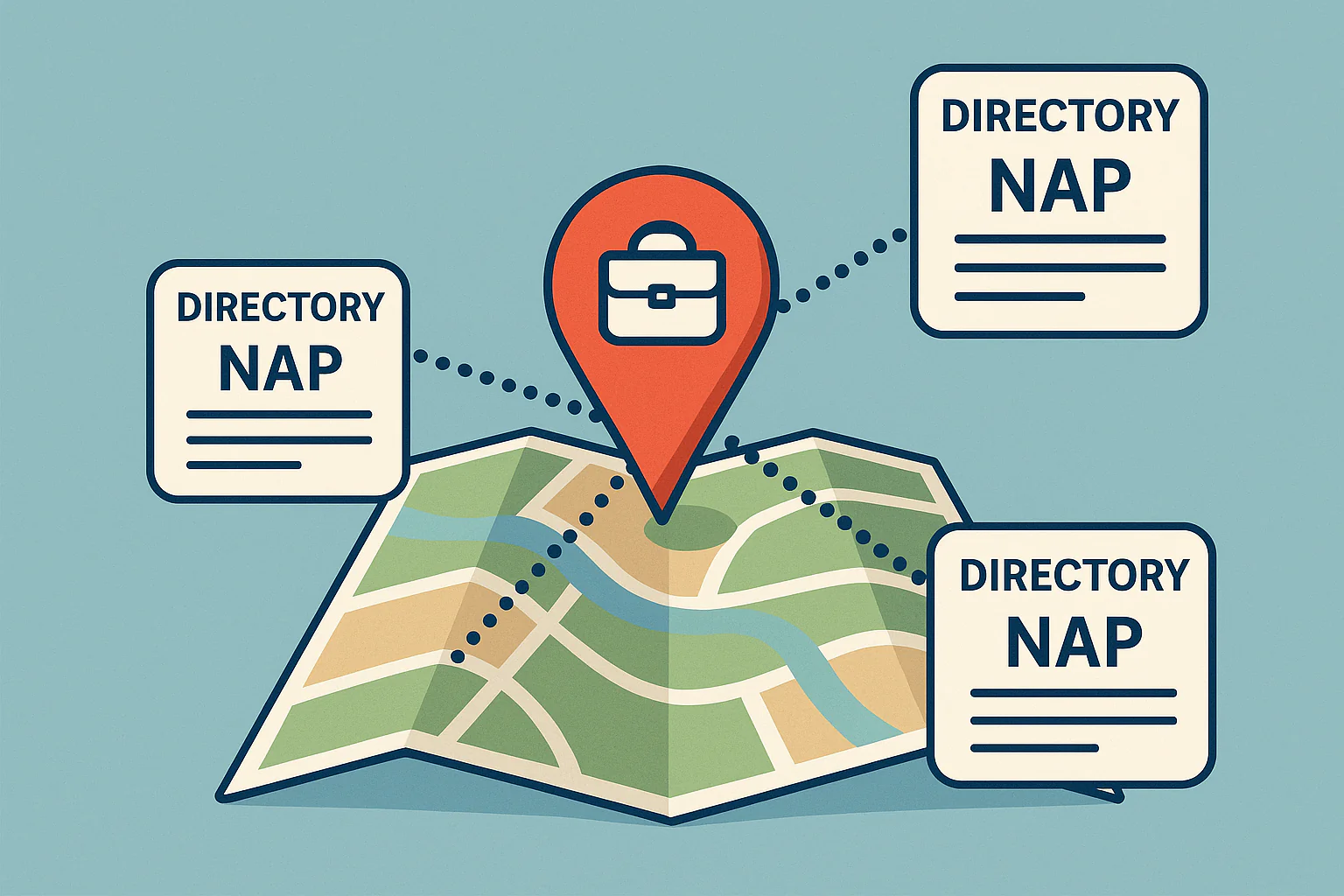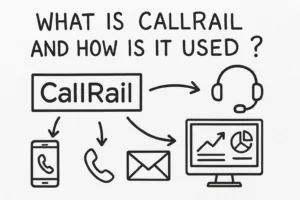✅ What We’ll Cover in This Article – Understanding what is NAP — Why It Matters and Common Pitfalls to Avoid
- What “NAP” means in marketing (and why it matters for local search).
- How inconsistent NAP data confuses Google—and your customers.
- The biggest mistakes companies make with NAP.
- Practical ways to manage and maintain NAP consistency.
- ROI impact: how better NAP accuracy translates into more calls, leads, and revenue.
What is NAP in marketing?
In digital marketing, NAP stands for Name, Address, and Phone Number. These three pieces of information form the foundation of your local business identity online.
When Google, Bing, Apple Maps, and industry directories see your business NAP repeated consistently across the web, it reinforces that your company is legitimate, established, and trustworthy. Inconsistent listings, on the other hand, create doubt—for both search engines and people looking for you.
Plainly put: NAP consistency is one of the biggest local SEO ranking factors. It helps search engines know who you are, where you are, and how customers can reach you.
Why NAP consistency is so important
Think about it from a buyer’s perspective. You search for a managed print provider, and Google shows three businesses. One has multiple addresses listed on different sites, another has an outdated phone number, and only one has consistent info everywhere.
Which one feels more credible?
Search engines weigh the same logic. Consistent NAP data acts like reputation points—boosting your visibility in local search results and maps.
ROI Snapshot:
If inaccurate NAP causes you to miss just 5 calls a month, and each call is worth $400 in potential revenue, that’s $24,000 in lost opportunity over a year (5 × $400 × 12).
The most common NAP mistakes businesses make
Even established organizations fall into these traps:
- Using different versions of their business name
- “ABC, Inc.” on one site, “ABC Technology Solutions” on another.
- Search engines treat them as separate entities.
- Moving offices without updating directories
- Your website reflects the new address, but half the directories still show the old one.
- Multiple phone numbers floating online
- Sales team publishes a tracking line, while customer support shares a direct desk line.
- Forgetting niche directories
- It’s not just Google. Yelp, Bing Places, Apple Maps, LinkedIn, and industry associations all matter.
- Ignoring duplicate listings
- Having two Google Business Profiles (even unintentionally) splits authority and confuses algorithms.
How to fix and manage NAP accuracy
Correcting NAP is not glamorous work—but it’s measurable and impactful. Here’s a practical roadmap:
- Audit your listings. Start with Google Business Profile, Bing, Apple Maps, and Facebook. Then check major directories like Yelp, BBB, and industry-specific platforms.
- Create a master record. Decide the exact business name, address format, and phone number to use everywhere.
- Update systematically. Work through the directories, removing duplicates and correcting inconsistencies.
- Monitor regularly. Quarterly checks prevent small errors from becoming big SEO problems.
- Automate if possible. Tools like Yext or BrightLocal can push updates across dozens of platforms at once.
👉 Doceo Pro Tip #1: Assign a single owner for NAP data—often your Marketing Director or Office Manager. When everyone has editing rights, consistency disappears.
👉 Doceo Pro Tip #2: Standardize how your address appears (e.g., “123 Main St, Suite 200” vs. “123 Main Street, Ste. 200”). Pick one version and lock it in.
What happens if you ignore NAP?
NAP inaccuracy isn’t just a search engine issue—it creates real business costs:
- Lost leads: Potential buyers calling wrong or outdated numbers.
- Frustration: Customers showing up at the wrong address.
- Lower visibility: Google showing competitors with stronger consistency.
- Reduced trust: Inconsistent details make your company look sloppy.
Hypothetical example:
A regional accounting firm moved offices in 2024 but didn’t update its NAP data across all sites. For six months, prospects kept calling the old number. Google flagged inconsistencies and dropped them from the local 3-pack. Leads dropped ~30% until the NAP cleanup was done.
ROI of paying attention to NAP
Even if each lost lead seems small, NAP consistency compounds ROI:
- Visibility boost: More consistent signals → higher local rankings.
- Conversion lift: Customers find and contact you without friction.
- Trust signal: Consistency builds credibility before the first call.
Quick Math:
If fixing NAP raises call volume by just 10 per month, and 25% of those convert at $1,000 average deal value, that’s $30,000 added monthly. Over a year, $360,000 in potential revenue tied directly to data accuracy.
FAQ: NAP in Marketing
Does NAP only apply to Google?
No. While Google Business Profile is critical, search engines cross-reference dozens of directories. Consistency everywhere matters.
How often should we audit NAP?
At least quarterly—or immediately after changes like moving offices or updating your phone system.
Can we use call tracking numbers?
Yes, but carefully. Always keep one consistent main number for directories, and route tracking numbers behind the scenes.
What if we have multiple locations?
Each location should have its own consistent NAP record across directories.
Is this something IT or marketing should own?
Marketing usually owns it, but collaboration with IT ensures systems and forwarding rules don’t break consistency.
Final Takeaway
NAP may feel like small details, but it directly affects how buyers find you, how search engines rank you, and whether your phone keeps ringing. For businesses in the Mid-Atlantic region, where competition for local visibility is tight, ignoring NAP accuracy can cost far more than the time it takes to get it right.
👋 Have questions or want to talk through your options? We’re here to help. Talk to a Doceo Marketing Advisor today → LET's TALK





